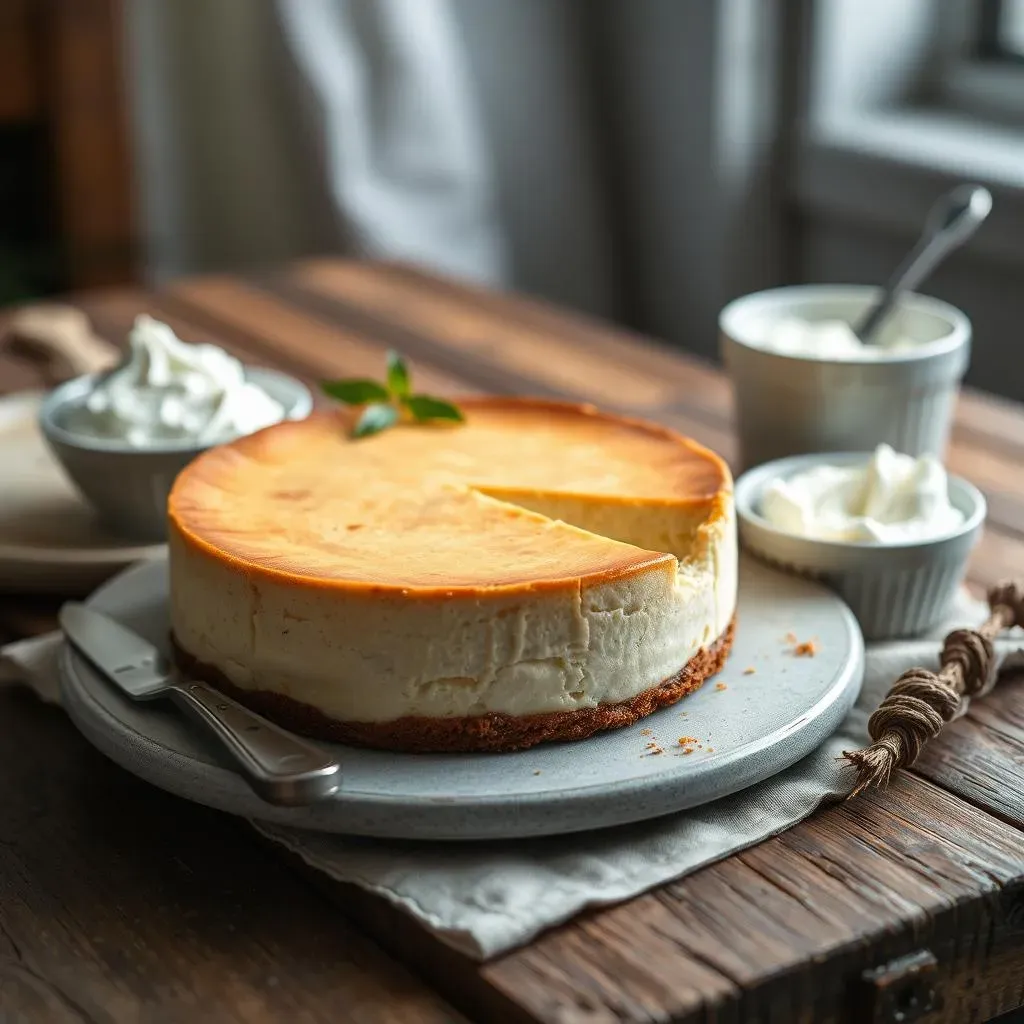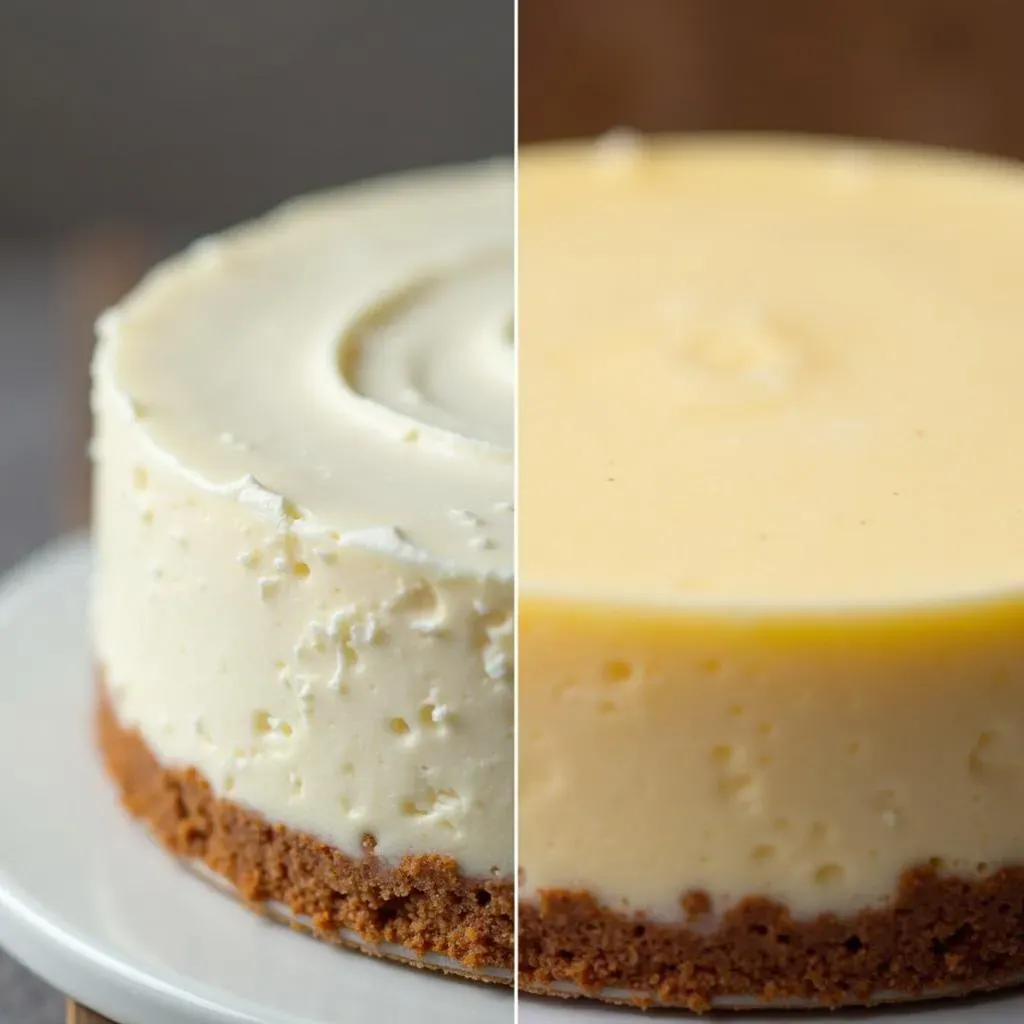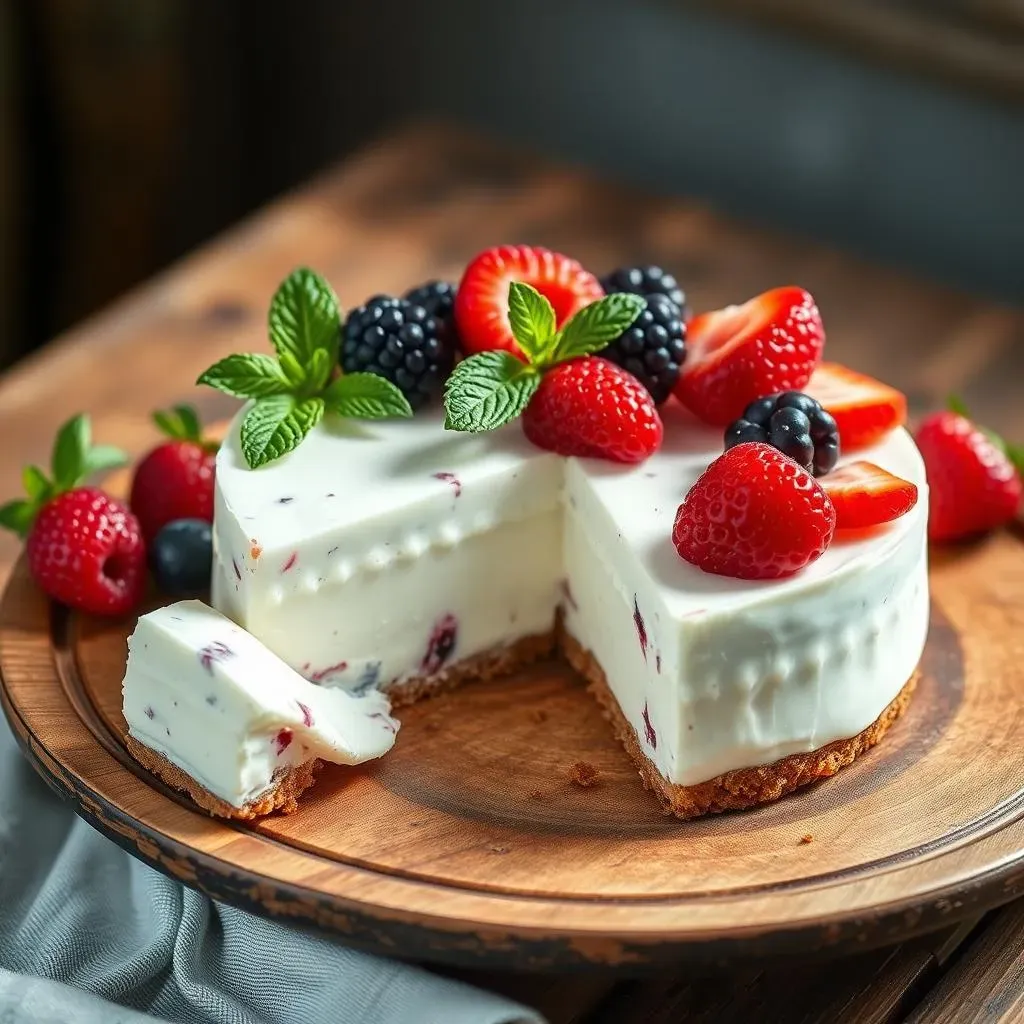Table of Contents
Ever stared longingly at a cheesecake recipe, only to discover you're out of sour cream? Don't despair, fellow dessert enthusiast! This article tackles the burning question: "can i substitute greek yogurt for sour cream in cheesecake?" We'll explore the similarities and differences between these two creamy ingredients, focusing on how they impact the final texture and taste of your cheesecake. We'll go beyond a simple yes or no, examining the nuances of making this substitution. Get ready to discover whether a Greek yogurt swap will create a creamy masterpiece or a culinary catastrophe. We’ll delve into the ideal type of Greek yogurt to use, offering practical tips and tricks for a successful substitution. Prepare to elevate your cheesecake game, even without that crucial sour cream ingredient! Let’s get baking!
Greek Yogurt vs. Sour Cream in Cheesecake: A Taste Test

Greek Yogurt vs. Sour Cream in Cheesecake: A Taste Test
Fat Content and Texture
Let's start with the big players: fat and texture. Sour cream typically boasts a higher fat content than Greek yogurt, usually around 18-20%. This higher fat content contributes to its incredibly smooth, rich texture, a key element in a decadent cheesecake. Greek yogurt, on the other hand, while creamy, can be a bit tangier and less rich depending on the brand and fat percentage. You can find Greek yogurt with higher fat content, but it might not be as readily available as regular sour cream.
Think of it like this: sour cream is the velvet couch of the dairy world, luxurious and smooth. Greek yogurt is more like a comfy armchair – still comfortable, but with a slightly different feel. This difference in fat content directly affects how your cheesecake will turn out. If you're aiming for that ultra-smooth, melt-in-your-mouth texture, sour cream might be your best bet. But if you're looking for a slightly lighter, tangier cheesecake, Greek yogurt could be a great alternative. Want to learn more about other sour cream substitutes? Check out our guide on using Greek yogurt as a substitute.
Ingredient | Fat Content (approx.) | Texture |
|---|---|---|
Sour Cream | 18-20% | Very smooth, rich |
Full-Fat Greek Yogurt | 8-10% | Creamy, slightly tangy |
Tanginess and Flavor Profile
Next up: the taste! Sour cream has a mild, slightly tangy flavor that complements the sweetness of cheesecake perfectly. Greek yogurt, especially plain varieties, also possesses a noticeable tang. However, the intensity of the tang can vary depending on the brand and whether it's plain or flavored. This tanginess can add a unique twist to your cheesecake, but it’s crucial to consider how it might interact with other flavors in your recipe.
For example, a lemon cheesecake might benefit from the extra tang of Greek yogurt, while a richer, chocolate cheesecake might be better off with the milder tang of sour cream. The key is balance! Too much tang can overpower the other flavors, resulting in a less harmonious taste experience. If you're unsure, a small-scale test run with a portion of your cheesecake batter can help you determine the ideal balance of flavors. Thinking about other dairy swaps? We have a whole article on substituting cream cheese for sour cream!
- Sour cream: Mild, slightly tangy
- Greek Yogurt: Tangy, can vary by brand
The Great Cheesecake Debate: Which Reigns Supreme?
Ultimately, the "better" choice between sour cream and Greek yogurt in cheesecake comes down to personal preference and the specific recipe. Both can yield delicious results, but they offer distinct flavor profiles and textures. Sour cream provides that classic, ultra-creamy cheesecake experience. Greek yogurt offers a lighter, tangier alternative that might be a better fit for certain flavor combinations. Consider the overall flavor profile of your cheesecake and your preferred texture when making your decision.
Don't be afraid to experiment! Baking is all about exploration and discovery. Try both options and see which one you prefer. You might even discover a new favorite cheesecake variation. Perhaps you'll even find a way to combine both for an entirely new level of deliciousness! For even more ideas on substitutions, check out our post on substituting cream cheese.
Can I Substitute Greek Yogurt for Sour Cream in Cheesecake? Texture and Consistency

Can I Substitute Greek Yogurt for Sour Cream in Cheesecake? Texture and Consistency
Understanding the Texture Difference
The core issue when swapping sour cream for Greek yogurt in cheesecake lies in their textural differences. Sour cream has a wonderfully smooth, almost velvety texture due to its higher fat content (typically 18-20%). This richness contributes significantly to the creamy mouthfeel we all love in cheesecake. Greek yogurt, even the full-fat variety, generally has a lower fat content (around 8-10%), resulting in a slightly thinner, potentially more tangy texture. While still creamy, it lacks the same luxurious richness as sour cream.
Think of it like this: imagine trying to build a sandcastle. Sour cream is like using perfectly damp sand – it holds its shape beautifully and creates a smooth surface. Greek yogurt is more like slightly dry sand – it's workable, but the resulting structure might be a little less cohesive and smooth. To help compensate for this difference, you might consider straining your Greek yogurt to remove excess whey before using it. This will give you a thicker consistency that’s closer to sour cream. For more info on other substitutions, see our post on using cream as a sour cream substitute.
- Sour cream: Velvety smooth, rich
- Greek Yogurt: Creamy, but potentially thinner
The Impact on Cheesecake Consistency
The textural differences between sour cream and Greek yogurt directly affect the final cheesecake consistency. A cheesecake made with sour cream will typically have a denser, richer, and more decadent texture. The higher fat content helps to create a smooth, creamy, and almost melt-in-your-mouth experience. Using Greek yogurt might result in a slightly less dense cheesecake, potentially with a more pronounced tang and a slightly less luxurious mouthfeel. This isn't necessarily a bad thing; it simply alters the overall character of the dessert.
However, the difference isn’t always drastic. The type of cheesecake recipe also matters. In a no-bake cheesecake, where the texture relies heavily on the creaminess of the filling, the difference might be more noticeable. In a baked cheesecake, the baking process can help to even out some of the textural differences. If you're aiming for the classic, rich cheesecake texture, sticking with sour cream is generally recommended. But don't count out Greek yogurt! It can still make a delicious cheesecake, just with a slightly different personality. Check out our article on using Greek yogurt in baking for more ideas.
Ingredient | Cheesecake Texture | Mouthfeel |
|---|---|---|
Sour Cream | Dense, rich | Luxurious, melt-in-your-mouth |
Greek Yogurt | Slightly less dense | Creamy, potentially tangier |
Tips for Achieving a Creamy Consistency with Greek Yogurt
If you're determined to use Greek yogurt in your cheesecake, there are ways to mitigate the texture difference. First, choose full-fat Greek yogurt; the higher fat content will give you a creamier result. Second, consider straining the yogurt to remove excess whey. This simple step significantly increases the thickness and creaminess of the yogurt, bringing it closer to the consistency of sour cream. You can strain the yogurt through cheesecloth or a fine-mesh sieve for a few hours in the refrigerator.
Finally, don't be afraid to adjust your recipe slightly. You might need to add a little extra cream cheese or another thickening agent, such as cornstarch, to achieve your desired consistency. Experimenting is key! Start by making a small batch to test the texture and flavor before committing to a whole cheesecake. Remember, even if the result isn't perfectly identical to a sour cream cheesecake, it can still be incredibly delicious! For more substitution tips, check out our guide on substituting Greek yogurt for sour cream.
Making the Swap: Tips for Using Greek Yogurt in Your Cheesecake Recipe

Making the Swap: Tips for Using Greek Yogurt in Your Cheesecake Recipe
Choosing the Right Greek Yogurt
So, you're ready to ditch the sour cream and embrace the tangy world of Greek yogurt cheesecakes? Fantastic! But not all Greek yogurts are created equal. For the best results, always opt for full-fat Greek yogurt. The higher fat content mimics sour cream's richness, resulting in a creamier, more decadent cheesecake. Avoid low-fat or non-fat varieties; they’ll be too thin and watery, leading to a disappointing final product. Look for brands that pride themselves on their thick and creamy texture. You want a yogurt that stands up on its own, not one that drips like a sad, lonely waterfall.
Think of it like this: you wouldn't use skim milk to make a creamy pasta sauce, would you? The same principle applies to cheesecakes. Full-fat Greek yogurt is your secret weapon for achieving that luscious, velvety texture. Need more ideas on dairy substitutions? Check out our guide on using crème fraîche!
- Choose full-fat Greek yogurt.
- Avoid low-fat or non-fat options.
- Look for thick and creamy brands.
Straining for Success
To further enhance the creaminess of your Greek yogurt, consider straining it before incorporating it into your cheesecake batter. Straining removes excess whey, the watery liquid that gives Greek yogurt its slightly thinner consistency. Straining thickens the yogurt considerably, making it much closer in texture to sour cream. You can use cheesecloth, a fine-mesh sieve, or even a coffee filter. Simply line a bowl with your chosen straining method, pour in the yogurt, and let it sit in the refrigerator for several hours (at least 2-3). The longer you strain, the thicker the yogurt will become.
This simple step makes a world of difference! Straining isn't mandatory, but it's highly recommended if you're aiming for that classic, ultra-creamy cheesecake texture. If you're looking for even more ways to enhance your cheesecake recipe, check out our article on using heavy cream!
Method | Straining Time (approx.) | Resulting Texture |
|---|---|---|
Cheesecloth | 3-4 hours | Very thick and creamy |
Fine-mesh sieve | 2-3 hours | Thick and creamy |
Recipe Adjustments
Even with full-fat, strained Greek yogurt, you might need to make minor recipe adjustments to achieve the perfect cheesecake consistency. Because Greek yogurt is naturally tangier than sour cream, you might want to reduce the amount of lemon juice or other acidic ingredients in your recipe. Likewise, you might need to add a touch of extra cream cheese to enhance the richness. Don't be afraid to experiment! A small test batch can help you find the ideal balance of flavors and textures.
Remember, baking is a journey of discovery! Don't be discouraged if your first attempt isn't perfect. Each cheesecake you bake is a learning experience, bringing you closer to mastering the art of the perfect slice. For more inspiration and substitution ideas, check out our post on using Greek yogurt in baking.